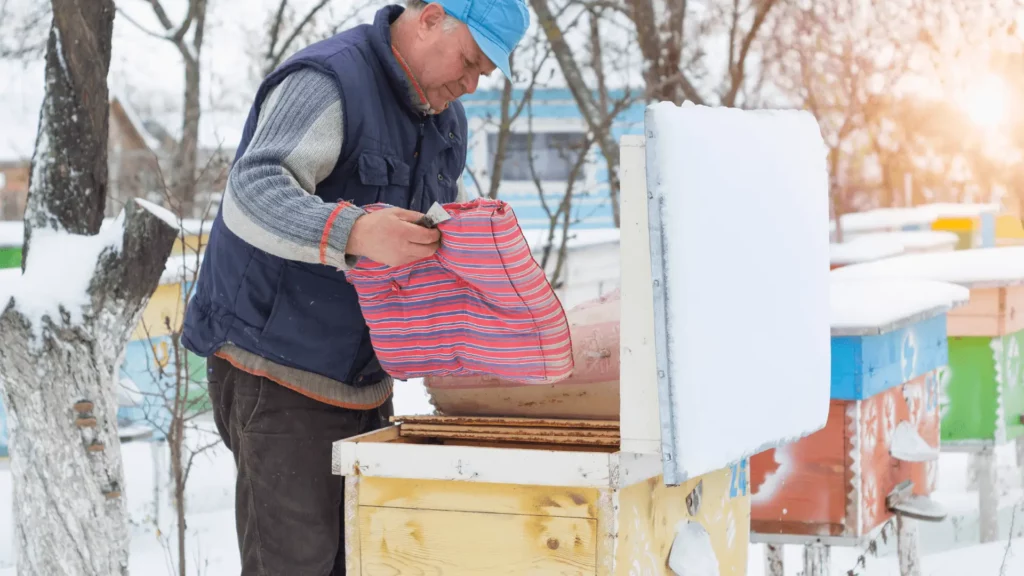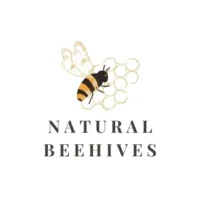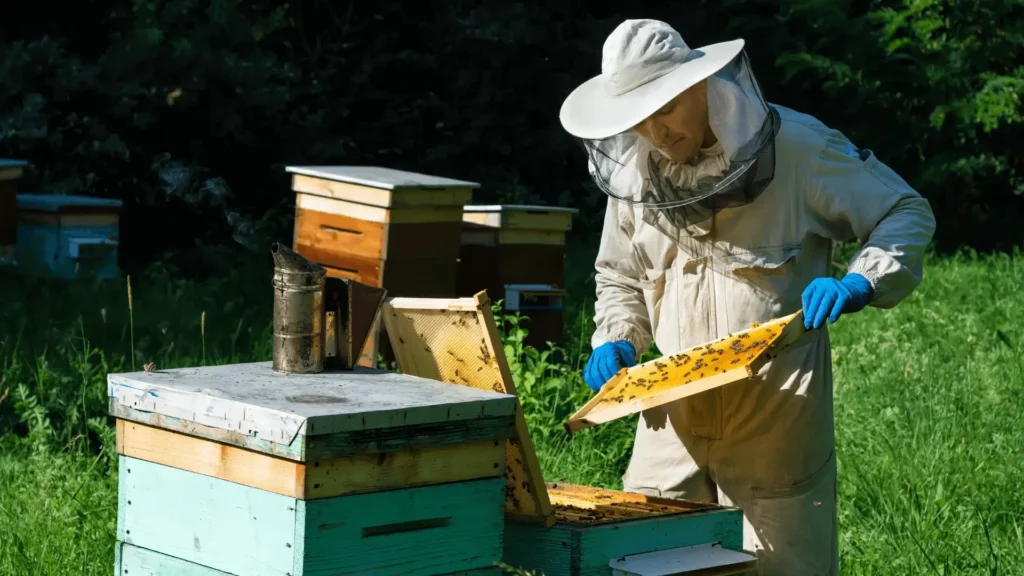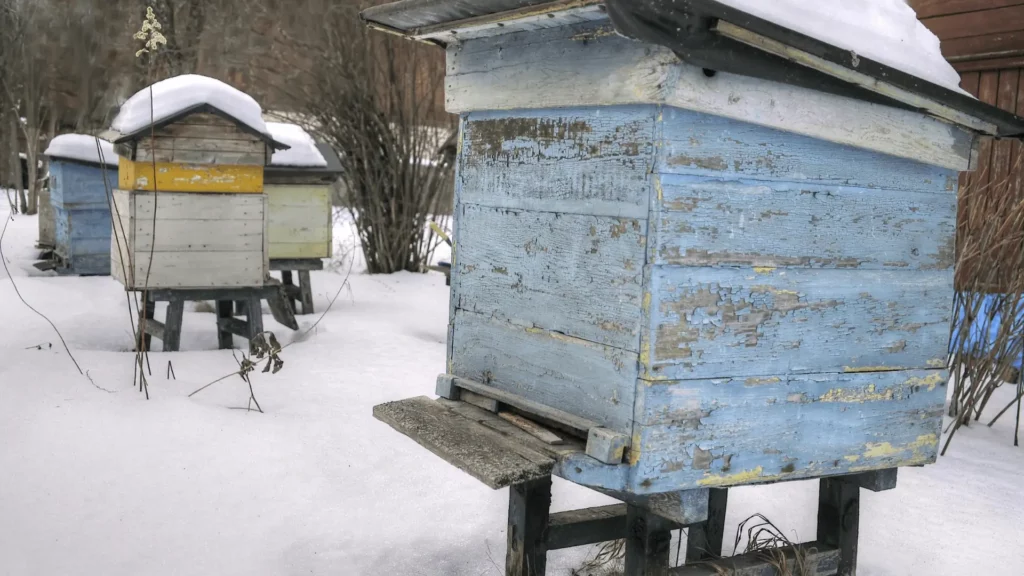
Are you worried about how to keep your precious bees warm during the chilly winter months? Well, worry no more! With the right insulation options, you can ensure the survival and comfort of your bee colony even in the coldest weather.
Proper insulation is key to maintaining a stable temperature, protecting your bees from harsh conditions, and reducing heat loss. In this informative article, we will explore the top insulation materials that are perfect for winter beehive insulation. Whether you’re a beginner or an experienced beekeeper, this article will provide you with the knowledge you need to make informed decisions about insulating your beehives.
Don’t let the cold weather weaken your bee colony. Keep reading as we explore the best insulation options for keeping your beehives warm and cozy all winter long.
Introduction to Winter Beehive Insulation
Proper insulation plays a crucial role in ensuring the survival of bee colonies during the winter season. As temperatures drop and harsh weather conditions prevail, beehives without insulation can expose bees to the risk of frostbite and even death.
Insulating beehives during winter serves multiple purposes. First and foremost, it helps maintain a stable temperature inside the hive, allowing bees to conserve energy and preserve their food stores. Bees depend on warmth to survive and reproduce, making insulation essential for their overall health and well-being.
Additionally, insulation reduces heat loss from the hive, preventing fluctuations in temperature that can disrupt the delicate balance of the colony. By providing a barrier against cold air infiltration, insulation safeguards the bees’ habitat, ensuring they have a comfortable environment even in the coldest months.
Moreover, insulation contributes to moisture control within the hive. Excess humidity can lead to condensation, which, in turn, can promote mold growth and negatively affect the bees’ health. Insulation materials with moisture-wicking properties can help maintain ideal humidity levels, protecting the bees from potential respiratory issues.
Remember, choosing the right insulation material is key to achieving the desired results. In the following sections, we will explore the best insulation materials available and discuss their benefits and suitability for winter beehive insulation.
The Best Insulation Materials for Beehives
When it comes to insulating your beehives during the winter season, selecting the right materials is crucial. Let’s explore the top three insulation materials that have proven to be effective for winter beehive insulation: foam board insulation, Styrofoam wrap hives, and straw and wood shavings.
Foam Board Insulation
Foam board insulation is a popular choice among beekeepers due to its excellent insulating properties. It provides a barrier against heat loss and helps maintain a stable temperature inside the hive. The insulating effectiveness of foam board is measured by its R-value, which indicates its resistance to heat flow. Look for a foam board with a high R-value to ensure maximum insulation.
To use foam board insulation, start by measuring the dimensions of your hive boxes. Cut the foam board to fit each side of the hive, ensuring a snug fit. Attach the insulation using staples or adhesive, making sure not to block the hive entrance or ventilation holes. Remember to insulate the inner cover as well for complete insulation.
Styrofoam Wrap Hives
Styrofoam wrap hives offer an affordable and convenient solution for winter beehive insulation. These lightweight materials are easy to work with and provide adequate insulation. Simply wrap the hive with Styrofoam sheets, ensuring proper ventilation by leaving gaps or creating vents. The wrap helps retain warmth within the hive and protects the bees from harsh weather conditions.
Straw and Wood Shavings
For a more eco-friendly approach, consider using straw and wood shavings as insulation materials. These natural materials are renewable resources and have excellent insulating properties. They maintain temperature and absorb excess moisture, ensuring a comfortable environment for the bees. Place a layer of straw or wood shavings around the beehive, providing an additional buffer against the cold.
When selecting insulation materials for your beehives, consider factors such as the climate, temperature regulation, and moisture control. Each of these insulation materials has its own unique benefits and suitability for winter beehive insulation. Choose the option that best fits your needs and provides the optimal level of insulation for your bees’ well-being.
Remember, proper insulation is essential for the winter survival of your colony. By investing in the right insulation materials, you can ensure your bees stay warm, conserve energy, and thrive even in the coldest months. Don’t overlook the importance of insulation as it can make a significant difference in the health and longevity of your hive.
Also read: Winterizing Bee Hives: How to Prepare Your Hives for the Cold Months
Foam Board Insulation: Effective Insulation with Easy Installation
Foam board insulation is a highly effective material for insulating beehives during winter. Its insulating and ventilating properties help maintain a stable temperature, ensuring the survival and well-being of your bee colony. Here are some key reasons why foam board insulation is a popular choice among beekeepers:
1. Insulating Properties: Foam board insulation provides excellent thermal insulation, preventing heat loss from the beehive. This helps maintain a constant temperature inside, protecting the bees from the harsh cold of winter.
2. Ventilating Properties: Foam board insulation allows for proper ventilation, regulating airflow within the hive. It helps control moisture levels by preventing excess condensation and maintaining optimal humidity for the bees.
3. Easy Installation: Installing foam board insulation is a straightforward process. Begin by measuring the dimensions of your beehive and cutting the insulation boards accordingly. Attach the boards to the hive using adhesive or screws, ensuring a secure fit. Seal any gaps or joints with insulation tape for maximum effectiveness.
Remember to place the foam board insulation on the exterior of the hive, covering all sides and the top, leaving the bottom entrance unobstructed. This will provide adequate insulation while allowing the bees to enter and exit freely.
Styrofoam Wrap Hives
Styrofoam wrap hives are an affordable and convenient option for insulating beehives during winter. The lightweight nature of Styrofoam makes it easy to handle and install, making it a popular choice among beekeepers.
To properly insulate your beehives using Styrofoam wrap, follow these instructions:
1. Measure the dimensions of your beehives and purchase the appropriate-sized Styrofoam sheets.
2. Cut the sheets to fit around each side of the hive, leaving openings for the entrance and ventilation.
3. Secure the Styrofoam sheets to the hive using duct tape or sturdy rubber bands.
4. Ensure proper ventilation by creating small holes or gaps in the Styrofoam to allow air circulation without compromising insulation.
5. Check regularly for any damage or wear to the wrap and make necessary repairs to maintain its effectiveness.
Styrofoam wrap hives provide insulation by creating a barrier that prevents heat loss and protects the bees from harsh weather conditions. It also helps regulate temperature fluctuations, ensuring a stable environment for the colony. By insulating your hives with Styrofoam wrap, you can help increase the chances of better winter survival for your bees.
Remember to prioritize proper ventilation to prevent moisture buildup and maintain good air quality inside the hive. Insulating beehives using Styrofoam wrap is a cost-effective and efficient way to protect your bees during the coldest months of the year.
Also read: Beginner’s Guide: Estimating the Cost of Starting a Beehive
Straw and Wood Shavings
Straw and wood shavings are excellent natural insulation materials that offer eco-friendly and cost-effective options for winter beehive insulation. These materials have the ability to maintain a stable temperature and absorb excess moisture, ensuring the well-being of your bee colony during the colder months.
One of the main advantages of using straw and wood shavings is their natural ability to retain heat. They create a layer of insulation that helps maintain the warmth inside the beehive, keeping the bees comfortable. Additionally, these materials have moisture-absorbing properties, preventing the buildup of condensation and reducing the risk of mold growth.
To effectively utilize straw and wood shavings as insulation, consider the following tips:
1. Add a layer of straw or wood shavings on top of the inner cover to provide an extra barrier against the cold.
2. Ensure proper ventilation to avoid excessive condensation and maintain optimal hive conditions.
3. Replace the insulation if it becomes wet or moldy to maintain its effectiveness.
By opting for straw and wood shavings as insulation materials, you not only provide effective temperature regulation but also choose a more eco-friendly and sustainable approach for winter beehive insulation. These natural options can contribute to the well-being and better winter survival of your bee colony.
Also read: Beekeepers Toolbox Essentials: Practical Must-Haves for Successful Beekeeping
Importance of Insulating Beehives During Winter
Insulating beehives during winter is essential to ensure the survival and well-being of the bee colony. With proper insulation, you can maintain a stable temperature inside the hive, protect the bees from harsh weather conditions, and reduce heat loss. Let’s explore the key reasons why insulating beehives during winter is crucial:
1. Maintaining Bee Health: Bees, especially the queen and the brood, require a constant temperature to thrive. Insulation helps regulate the temperature and prevents extreme fluctuations that can be detrimental to their health. It enables the bees to conserve energy and focus on activities vital for their survival.
2. Conserving Energy: Proper insulation minimizes heat loss from the hive, reducing the bees’ need to generate extra warmth. This conservation of energy allows the bees to efficiently utilize their food reserves during the winter months.
3. Optimizing Temperature: Insulation provides a buffer against cold temperatures, helping the hive maintain an optimal temperature for the bees’ well-being. By preventing excessive heat loss, insulation ensures that the bees can cluster together and generate enough warmth to survive the coldest months.
Insulating beehives during winter is particularly significant in regions with harsh weather conditions and cold climates. It not only provides a more comfortable environment for the bees but also promotes better winter survival of the colony. Additionally, insulation helps control moisture levels within the hive, reducing the risk of condensation and related issues like mold growth.
Choosing the right insulation material is crucial to ensure effective temperature regulation and moisture control. By selecting the best insulation option for your beehive, you can provide a secure and well-insulated space for your bee colony throughout the winter season.
Also read: The Ultimate Beekeeping Starter Kit: Everything You Need to Get Started
Conclusion
Effective insulation is crucial for the survival of your bee colony during the harsh winter months. By choosing the right insulation material, you can provide the necessary protection and maintain a stable temperature inside the beehive. The top three insulation materials for winter beehive insulation are:
1. Foam Board Insulation: This lightweight material offers excellent insulation and ventilation properties. It is easy to install and provides reliable temperature regulation for your bees.
2. Styrofoam Wrap Hives: Affordable and convenient, Styrofoam wrap hives provide insulation by creating a barrier against the cold. Proper ventilation is essential when using this insulation material to prevent condensation and ensure the bees’ health.
3. Straw and Wood Shavings: These eco-friendly materials help maintain a constant temperature inside the hive and absorb excess moisture. They are a more sustainable choice and can improve winter survival rates.
Choosing the right insulation material for your beehive is crucial for the well-being of your bees. It helps conserve energy, reduce heat loss, and optimize temperature. Consider the specific needs of your colony and the climate of your area when selecting the best insulation option. By providing adequate insulation, you ensure the health and survival of your bee colony during the winter season.



